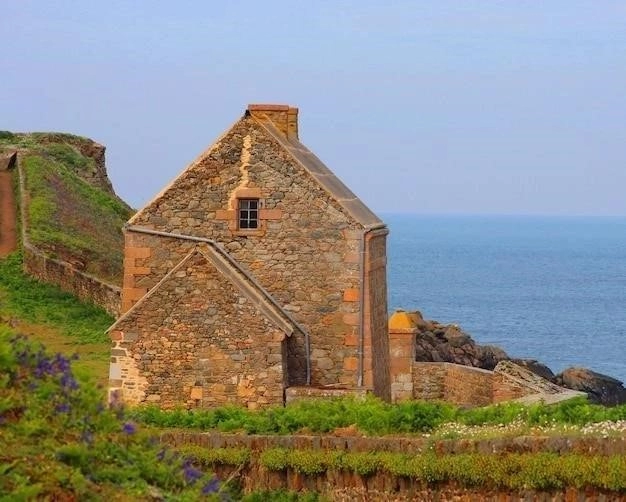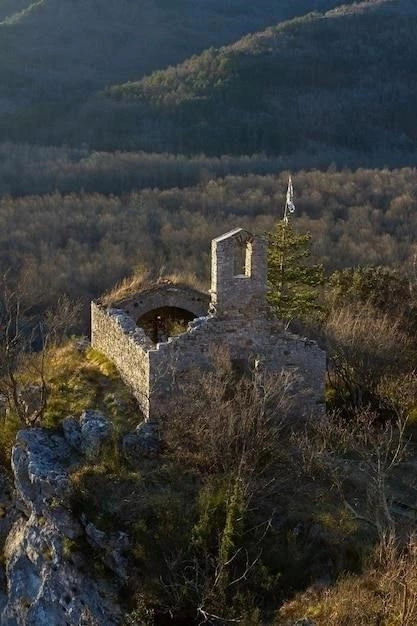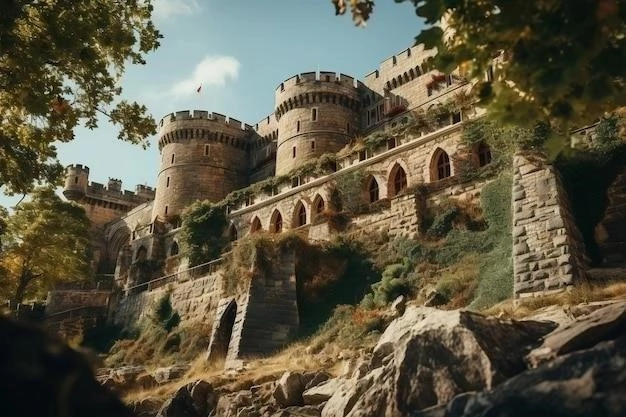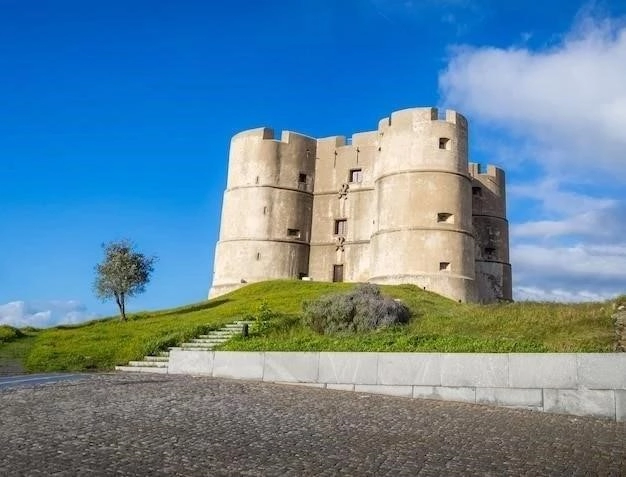Introduction
Nestled amidst the rugged peaks of the Sahyadri Mountain Range in Maharashtra‚ India‚ lies the majestic Torna Fort‚ also known as Prachandagad. This formidable hill fort‚ steeped in history and legend‚ stands as a testament to the military prowess and architectural brilliance of the bygone era. Its strategic location‚ towering ramparts‚ and captivating views have captivated the hearts of adventurers‚ history enthusiasts‚ and nature lovers alike for centuries.
Historical Significance
Torna Fort occupies a significant place in the annals of Maratha history. It earned its place as the first fort captured by the legendary Maratha warrior king‚ Chhatrapati Shivaji Maharaj‚ in 1646‚ at the tender age of sixteen. This pivotal victory marked the beginning of Shivaji Maharajs extraordinary military campaigns‚ ultimately leading to the establishment of the mighty Maratha Empire. Torna Fort served as a crucial strategic stronghold for the Marathas during their struggle against the Mughal Empire.
Architectural Marvel
Torna Fort is an exceptional example of medieval Indian military architecture. Its robust construction and ingenious design highlight the advanced engineering skills of its builders. The fort sprawls over an expansive area‚ enclosed by imposing stone walls that have withstood the test of time. Several strategically positioned bastions and gateways further fortified the fort‚ making it an impenetrable fortress.
Notable Architectural Features:
- Menghai Devi Temple: Located within the forts walls‚ this temple dedicated to the goddess Menghai Devi holds immense religious significance for locals and is a popular pilgrimage site.
- Zunjar Machi: One of the forts two main peaks‚ Zunjar Machi offers breathtaking panoramic views of the surrounding valleys and hills. It served as a strategic observation point during battles.
- Budhla Machi: The other prominent peak of Torna Fort‚ Budhla Machi‚ is known for its challenging climb and stunning vistas. It housed essential storage structures and provided a vantage point for monitoring enemy movements.
- Water Cisterns: The forts ingenious water management system included several large cisterns carved out of rock. These cisterns collected rainwater during the monsoon season‚ ensuring a year-round water supply for the forts inhabitants.
Trekking to Torna Fort
Torna Fort has become a popular trekking destination‚ attracting adventure seekers from all over. The trek‚ though moderately challenging‚ offers an exhilarating experience amidst scenic surroundings. The trail winds through dense forests‚ rocky terrains‚ and steps carved into the hillside‚ leading to the forts summit. Along the way‚ trekkers are rewarded with stunning views of the surrounding valleys‚ waterfalls‚ and neighboring forts.
Trekking Information:
- Difficulty Level: Moderate
- Trek Distance: Approximately 2.5 kilometers (one way)
- Duration: 4-5 hours (round trip)
- Best Time to Trek: June to February (monsoon and post-monsoon seasons offer the most scenic views)
- Wear comfortable trekking shoes with good grip.
- Carry ample water and snacks as there are limited options available on the trail.
- Start the trek early in the morning to avoid the midday heat.
- Its advisable to trek with a group or a guide‚ especially during the monsoon season.
Preservation and Conservation
Torna Fort‚ being a site of historical and architectural importance‚ is protected by the Archaeological Survey of India (ASI). Efforts are underway to conserve the forts structures and prevent further deterioration. Visitors are urged to respect the historical sanctity of the site and refrain from littering or damaging the forts walls and structures.
Conclusion
Torna Fort‚ with its rich history‚ imposing architecture‚ and breathtaking surroundings‚ stands as a proud symbol of Maratha valor and architectural ingenuity. A trek to this magnificent fort is not just an adventure but a journey back in time‚ allowing visitors to immerse themselves in the grandeur of the past. As you stand atop its ramparts‚ gazing out at the vast expanse below‚ you can almost hear the echoes of history whispering through the wind.
Beyond the Basics: Delving Deeper into Torna Forts Significance
While the previous sections provide a comprehensive overview of Torna Fort‚ its importance extends beyond its physical attributes and historical milestones. To fully appreciate this magnificent edifice‚ its crucial to explore the nuances of its impact on the surrounding region and its enduring legacy in contemporary times.
Torna Forts Role in Shaping the Maratha Empire
The capture of Torna Fort by a young Shivaji Maharaj wasnt merely a military victory; it was a strategic masterstroke that laid the foundation for the Maratha Empire. The forts strategic location‚ perched high above the surrounding plains‚ gave the Marathas a significant tactical advantage. From this vantage point‚ they could monitor enemy movements‚ control vital trade routes‚ and launch surprise attacks.
Furthermore‚ Torna Fort served as a training ground for Shivaji Maharajs growing army. It was here that he honed his guerrilla warfare tactics‚ which would later prove instrumental in challenging the Mughal dominance. The forts rugged terrain and challenging environment instilled in his soldiers the resilience and adaptability that became hallmarks of the Maratha army.
The Forts Impact on the Local Economy and Society
Throughout history‚ forts have served as more than just military strongholds; theyve acted as economic hubs and centers of social and cultural exchange. Torna Fort was no exception. The presence of the fort stimulated economic activity in the surrounding region. Villages sprang up at the forts base‚ catering to the needs of the garrison and providing essential supplies. The fort also served as a marketplace where traders from distant lands converged to exchange goods.
Moreover‚ Torna Fort fostered a sense of unity and identity among the local populace. During times of war or invasion‚ the fort provided refuge to villagers from neighboring areas‚ fostering a sense of shared destiny. This spirit of solidarity played a crucial role in the Marathas resistance against external forces.
Torna Fort in the Present Day: A Symbol of Heritage and Tourism
Today‚ Torna Fort stands as a proud reminder of Maharashtras glorious past. It has become a popular destination for history enthusiasts‚ trekkers‚ and nature lovers alike. The forts historical significance‚ combined with its scenic beauty‚ attracts visitors from all over India and beyond. This influx of tourism has provided a much-needed boost to the local economy‚ creating employment opportunities and promoting the regions cultural heritage.
Recognizing the forts importance‚ the Maharashtra Tourism Development Corporation (MTDC) has undertaken various initiatives to improve tourist facilities at the site. These include the construction of restrooms‚ shelters‚ and information centers. Efforts are also underway to raise awareness about the forts historical significance and promote responsible tourism.
Conservation Efforts and Challenges
Preserving historical monuments like Torna Fort is an ongoing challenge. The passage of time‚ coupled with environmental factors and human activity‚ takes a toll on these ancient structures. The ASI‚ in collaboration with other organizations‚ is actively involved in conservation efforts to protect the fort from further degradation. These efforts include:
- Structural Repairs: Repairing and reinforcing weakened walls‚ bastions‚ and gateways to ensure structural stability.
- Vegetation Control: Regularly removing vegetation growth that can damage the forts walls and foundations.
- Drainage Improvement: Improving drainage systems to prevent waterlogging and erosion‚ which can weaken the forts structure.
- Documentation and Research: Conducting detailed surveys‚ documentation‚ and research to understand the forts history‚ architecture‚ and conservation needs.
However‚ conservation efforts face several challenges‚ including limited funding‚ a shortage of skilled laborers‚ and the impact of tourism. Balancing the need to preserve the forts authenticity with making it accessible to visitors requires careful planning and sustainable tourism practices.
The Enduring Legacy of Torna Fort
Torna Forts legacy extends far beyond its physical presence. It stands as a testament to the courage‚ determination‚ and strategic brilliance of the Maratha warriors who once defended its ramparts. The forts historical significance continues to inspire generations‚ instilling in them a sense of pride in their heritage. Moreover‚ Torna Fort serves as a reminder of the importance of preserving historical monuments for future generations. These structures are not merely relics of the past; they are tangible links to our history‚ offering valuable insights into the lives and times of those who came before us.
As you stand before the imposing gates of Torna Fort‚ youre not just witnessing a magnificent architectural marvel; youre connecting with a rich tapestry of history‚ culture‚ and human endeavor that continues to shape the present and inspire the future.
Torna Fort: Beyond the Physical ⎻ Intangible Heritage and Contemporary Relevance
While the architectural and historical significance of Torna Fort are undeniable‚ its crucial to recognize the intangible heritage intertwined with its existence. This encompasses the stories‚ legends‚ and cultural practices passed down through generations‚ shaping the forts identity and influencing the local communitys worldview.
Folktales and Legends: Echoes of Valor and Romance
Torna Fort‚ like many ancient structures‚ is steeped in folklore and legend. These tales‚ passed down orally through generations‚ offer a glimpse into the beliefs‚ fears‚ and aspirations of the people who lived in the forts shadow. Some stories recount acts of extraordinary bravery by Maratha warriors‚ while others whisper of hidden treasures and secret passages. One popular legend tells of a young Shivaji Maharaj discovering a hidden cache of weapons within the fort‚ which he later used to launch his campaign against the Mughals. While the veracity of these tales remains open to debate‚ their enduring presence underscores the forts hold on the popular imagination.
Cultural Practices and Traditions: Living Links to the Past
Torna Fort is not merely a historical artifact; it continues to play a role in the cultural practices and traditions of the local community. Annual festivals and religious ceremonies are held within the forts walls‚ attracting devotees and pilgrims from far and wide. These gatherings often feature traditional music‚ dance performances‚ and storytelling‚ providing a platform for the transmission of cultural heritage. The forts association with Shivaji Maharaj‚ a revered figure in Maharashtra‚ adds to its cultural significance‚ making it a site of pilgrimage for those seeking to connect with their roots and pay homage to their ancestors.
Torna Fort in the 21st Century: Challenges and Opportunities
As Torna Fort enters the 21st century‚ it faces a unique set of challenges and opportunities. Balancing the need for conservation with the demands of tourism‚ addressing issues of accessibility and infrastructure‚ and ensuring the sustainable management of the site are paramount concerns.
Sustainable Tourism: Striking a Delicate Balance
The rise of tourism‚ while economically beneficial‚ poses a significant threat to the forts long-term preservation. Unregulated visitor traffic‚ littering‚ and vandalism can irrevocably damage the forts fragile ecosystem and historical fabric. Implementing sustainable tourism practices‚ such as limiting visitor numbers‚ promoting responsible behavior‚ and investing in eco-friendly infrastructure‚ is essential to mitigate these risks. Engaging local communities in tourism management and ensuring that they benefit from the forts popularity is crucial for fostering a sense of ownership and promoting long-term sustainability.
Accessibility and Infrastructure: Enhancing the Visitor Experience
While the challenging trek to Torna Fort is part of its allure‚ improving accessibility without compromising the sites integrity is crucial. This includes upgrading existing trails‚ providing clear signage‚ and ensuring the availability of basic amenities like restrooms and drinking water facilities. Investing in interpretive signage and visitor centers can enhance the visitor experience by providing historical context and highlighting the forts significance. Additionally‚ promoting alternative modes of transport‚ such as electric vehicles or shuttle services‚ can reduce the environmental impact of vehicular traffic.
Community Engagement: Fostering a Shared Responsibility
The long-term preservation of Torna Fort hinges on the active participation of the local community. Engaging residents in conservation efforts‚ empowering them with the knowledge and skills to protect their heritage‚ and providing economic opportunities through tourism can foster a sense of shared responsibility. Collaborating with local NGOs‚ educational institutions‚ and community leaders can help raise awareness about the importance of heritage conservation and promote sustainable practices.
Conclusion: Preserving a Legacy for Future Generations
Torna Fort stands as a testament to the ingenuity‚ resilience‚ and cultural richness of the Maratha people. Its towering ramparts‚ breathtaking vistas‚ and captivating legends continue to inspire awe and wonder. As we navigate the complexities of the 21st century‚ it is our collective responsibility to ensure that this architectural marvel and its intangible heritage endure for generations to come. By embracing sustainable practices‚ investing in responsible tourism‚ and fostering community engagement‚ we can ensure that Torna Fort continues to inspire and educate‚ reminding us of the enduring power of the past to shape the present and inspire the future.
Preserving the Intangible: Oral Histories and Cultural Documentation
Beyond the tangible aspects of preservation‚ documenting and safeguarding the intangible heritage associated with Torna Fort is equally crucial. This encompasses the rich tapestry of oral histories‚ folklore‚ songs‚ and local knowledge that have been passed down through generations‚ providing invaluable insights into the forts cultural significance.
Collaborative projects involving local communities‚ historians‚ and anthropologists are essential to record and archive these intangible elements. Conducting interviews with elderly residents‚ documenting traditional songs and stories‚ and creating digital archives can ensure that this invaluable heritage is not lost to time. Furthermore‚ incorporating these narratives into visitor interpretation programs can enrich the tourist experience and foster a deeper understanding of the forts multifaceted significance.
Technological Advancements in Heritage Conservation: Leveraging Innovation for Torna Fort
The 21st century offers unprecedented opportunities to leverage technological advancements for heritage conservation. 3D laser scanning‚ photogrammetry‚ and virtual reality can create highly accurate digital models of Torna Fort‚ aiding in structural analysis‚ restoration planning‚ and virtual tourism experiences. These technologies enable the creation of immersive virtual tours‚ allowing visitors to explore the fort remotely‚ minimizing physical impact while maximizing accessibility for those unable to make the physical journey.
Furthermore‚ integrating sensor networks within the forts structure can provide real-time monitoring of environmental conditions‚ such as temperature‚ humidity‚ and vibrations‚ enabling proactive conservation efforts and mitigating potential risks from natural disasters or climate change;
Torna Fort: A Catalyst for Sustainable Development and Community Empowerment
Preserving Torna Fort extends beyond its historical and architectural value; it presents an opportunity to promote sustainable development and empower local communities. Developing eco-friendly tourism infrastructure‚ such as solar-powered lighting‚ rainwater harvesting systems‚ and waste management programs‚ can serve as a model for responsible tourism practices in the region.
Empowering local communities by providing training in hospitality‚ guiding‚ and craft production can create sustainable livelihoods while fostering a sense of ownership over their heritage. Establishing community-based tourism initiatives ensures that the economic benefits of tourism are equitably distributed‚ contributing to the socio-economic well-being of the region while safeguarding its cultural treasures.

Conclusion: A Shared Responsibility for a Shared Heritage
Preserving Torna Fort is not solely the responsibility of government agencies or conservation organizations; it requires a collaborative approach involving local communities‚ tourists‚ and stakeholders. By fostering a sense of shared responsibility‚ promoting sustainable tourism practices‚ and harnessing the power of technology‚ we can ensure that Torna Fort continues to inspire awe and wonder for generations to come. Its enduring legacy serves as a potent reminder of the importance of preserving our shared heritage‚ not just for its historical significance‚ but for its capacity to enrich our present and shape a more sustainable and inclusive future.
Addressing Contemporary Challenges: Conservation‚ Tourism‚ and Community Engagement
Torna Fort‚ like many heritage sites globally‚ faces a complex interplay of challenges in the 21st century. Preserving its structural integrity while managing increasing tourist footfall requires a delicate balancing act. Developing a comprehensive conservation management plan is paramount. This plan should encompass:
Structural Integrity and Conservation:
- Regular Structural Assessments: Employing qualified engineers and conservation architects to conduct periodic assessments of the forts walls‚ bastions‚ and gateways is essential. This helps identify areas of weakness‚ potential risks from natural elements‚ and allows for timely interventions.
- Scientific Conservation Practices: Implementing internationally recognized conservation principles and using appropriate materials is critical. This ensures that restoration work is sympathetic to the original construction techniques and materials‚ preserving the forts authenticity.
- Vegetation Control: Uncontrolled vegetation growth poses a significant threat to the structural integrity of historic structures. Implementing a systematic vegetation management plan‚ employing non-destructive methods‚ is crucial for the forts long-term preservation.
Sustainable Tourism Management: Balancing Preservation with Access
- Visitor Management Strategies: Implementing measures to regulate visitor numbers‚ particularly during peak seasons‚ is crucial to minimize wear and tear on the site. This may involve ticketing systems‚ designated trails‚ and timed entry slots.
- Interpretive Signage and Guided Tours: Providing clear and informative signage‚ as well as trained guides‚ enhances the visitor experience while promoting responsible behavior. This helps visitors understand the forts significance and fosters respect for its historical and cultural value.
- Waste Management and Infrastructure: Implementing effective waste management systems is non-negotiable. Providing adequate restroom facilities‚ and promoting eco-friendly practices among visitors are crucial to minimizing the impact of tourism on the forts natural environment;
Community Engagement and Economic Empowerment:
- Capacity Building and Training: Equipping local communities with the skills and knowledge to participate in conservation efforts and tourism management is essential. This can include training programs in traditional building techniques‚ tour guiding‚ and hospitality.
- Economic Opportunities and Benefits: Ensuring that local communities derive tangible benefits from tourism is crucial for long-term sustainability. This can involve promoting local crafts‚ homestays‚ and employing community members in tourism-related services.
- Sense of Ownership and Pride: Fostering a sense of ownership and pride among local communities is paramount. Involving them in decision-making processes related to the forts management ensures that conservation efforts align with their cultural values and aspirations.
Torna Fort: A Beacon for Future Generations
Torna Fort stands not only as a testament to a bygone era but also as a beacon for the future. Its preservation hinges on a multifaceted approach that balances conservation‚ sustainable tourism‚ and community engagement. By harnessing technological advancements‚ fostering international collaborations‚ and prioritizing ethical stewardship‚ we can ensure that Torna Fort continues to inspire awe‚ ignite imaginations‚ and connect future generations to the indomitable spirit of the Maratha Empire. Its legacy serves as a potent reminder that heritage preservation is not merely about safeguarding the past‚ but about shaping a more sustainable‚ inclusive‚ and culturally rich future for all.

Harnessing Technology for Preservation and Interpretation
In the digital age‚ cutting-edge technologies offer unprecedented opportunities to enhance the preservation and interpretation of Torna Fort. Employing 3D laser scanning can create a highly accurate and detailed digital twin of the fort. This invaluable tool aids in:
- Condition Monitoring: Detecting even minute changes in the structure over time‚ enabling proactive conservation interventions before they escalate into major problems.
- Virtual Restoration: Showcasing the forts original grandeur by digitally reconstructing damaged or missing sections‚ enhancing the visitor experience and providing valuable insights for restoration efforts;
- Interactive Storytelling: Developing immersive virtual tours and augmented reality applications that bring the fort’s history to life‚ captivating visitors and fostering a deeper understanding of its significance. Imagine visitors pointing their smartphones at a bastion and witnessing a virtual recreation of the battle that raged there‚ complete with historical figures and weaponry.
Leveraging International Collaboration and Expertise
Preserving a site of Torna Forts magnitude and historical significance necessitates a global perspective. International collaborations offer invaluable opportunities to:
- Exchange Best Practices: Partnering with institutions and experts specializing in heritage conservation‚ particularly those with experience in similar fortifications or historical contexts‚ facilitates the exchange of knowledge‚ methodologies‚ and best practices. This cross-cultural dialogue can yield innovative solutions tailored to Torna Forts unique needs.
- Access Specialized Expertise: Engaging with international specialists in fields like archaeometry‚ epigraphy‚ and conservation science can provide crucial insights into the forts building materials‚ construction techniques‚ and the environmental factors affecting its preservation. This expertise is invaluable for developing targeted conservation strategies.
- Promote Global Awareness: International collaborations provide platforms to showcase Torna Forts historical and cultural significance on a global stage. This can attract international tourism‚ foster cultural exchange‚ and highlight the importance of heritage preservation as a collective endeavor.

Ethical Stewardship: A Legacy for Future Generations
Preserving Torna Fort extends beyond its physical structure; it encompasses safeguarding its intangible heritage – the stories‚ traditions‚ and cultural memories it embodies. Ethical stewardship demands a holistic approach that considers:
- Respect for Cultural Significance: Recognizing and respecting the cultural and spiritual values associated with Torna Fort‚ particularly for local communities and indigenous groups‚ is paramount. This includes engaging with these communities in meaningful consultations and ensuring that conservation efforts align with their cultural beliefs and practices.
- Transparency and Accountability: Maintaining transparency in all conservation and management decisions‚ and ensuring accountability in the allocation and utilization of resources‚ builds trust and fosters public support for preservation efforts.
- Sustainable Development Goals: Aligning conservation efforts with the United Nations Sustainable Development Goals‚ particularly those related to cultural heritage‚ sustainable tourism‚ and climate action‚ ensures that Torna Forts preservation contributes to a more sustainable and equitable future for all.

Sustainable Tourism: Balancing Access and Preservation
Torna Fort’s historical significance and scenic beauty make it a prime destination for tourists; However‚ uncontrolled tourism can have detrimental effects on the forts structural integrity and ecological balance. Therefore‚ implementing a sustainable tourism model is crucial. This involves:
- Visitor Management: Regulating the number of visitors at any given time through a timed entry system helps prevent overcrowding‚ reduces wear and tear on the fort‚ and ensures a more fulfilling visitor experience.
- Interpretive Signage and Guided Tours: Providing informative and engaging signag
Sustainable Tourism: Balancing Access and Preservation
Torna Fort’s historical significance and scenic beauty make it a prime destination for tourists. However‚ uncontrolled tourism can have detrimental effects on the fort’s structural integrity and ecological balance. Therefore‚ implementing a sustainable tourism model is crucial. This involves:
- Visitor Management: Regulating the number of visitors at any given time through a timed entry system helps prevent overcrowding‚ reduces wear and tear on the fort‚ and ensures a more fulfilling visitor experience.
- Interpretive Signage and Guided Tours: Providing informative and engaging signage and trained guides enhances visitors understanding and appreciation of the fort’s history‚ architecture‚ and ecological significance while promoting responsible behavior.
- Infrastructure Development: Investing in sustainable infrastructure‚ such as eco-friendly restrooms‚ waste management systems‚ and clearly marked trails‚ minimizes the environmental impact of tourism.
Community Engagement: Guardians of Heritage
The local communities surrounding Torna Fort are its true custodians‚ possessing invaluable knowledge and a deep-rooted connection to the site. Engaging them as active stakeholders in the forts preservation and management is not just desirable but essential. This can be achieved through:
- Capacity Building: Providing training and employment opportunities for local communities in areas such as heritage conservation‚ tour guiding‚ and hospitality empowers them economically while ensuring the sustainable management of the fort.
- Cultural Exchange Programs: Organizing cultural events‚ workshops‚ and storytelling sessions involving local communities helps preserve and celebrate the intangible heritage associated with Torna Fort‚ passing down traditions and stories to future generations.
- Participatory Decision-Making: Establishing platforms for open dialogue and collaboration‚ allowing local communities to actively participate in decision-making processes related to the fort’s conservation‚ tourism management‚ and development plans ensures that their voices are heard and their concerns addressed.
Torna Fort: A Legacy Enduring
Torna Fort‚ with its imposing presence and captivating history‚ stands as a testament to the architectural ingenuity and military prowess of the Maratha Empire. By embracing a holistic approach that integrates cutting-edge technology‚ international collaboration‚ sustainable tourism practices‚ and meaningful community engagement‚ we can ensure that this magnificent historical treasure continues to inspire awe and ignite the imaginations of generations to come. Preserving Torna Fort is not just about safeguarding bricks and mortar; it is about safeguarding a legacy‚ a symbol of resilience‚ and a source of pride for India and the world.










